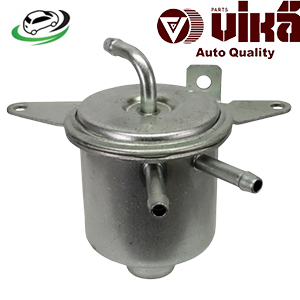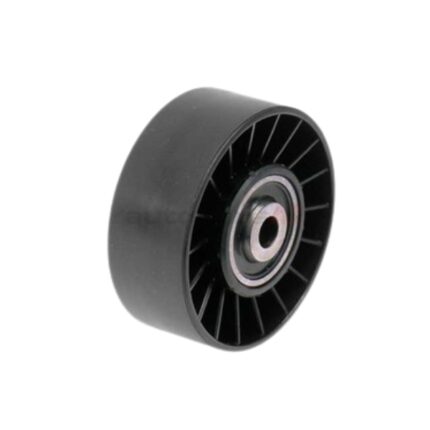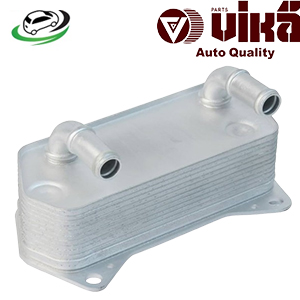Get AUDI A3 8P/ TT MKII / VW Beetle/ CC/ EOS/ Golf V/VI/ Jetta V/VI/ Passat B6/B7/ R32 MKV Transmission Oil Cooler 02E409061B
The transmission oil cooler is a critical component in the automotive transmission system, designed to manage and regulate the temperature of transmission fluid. By preventing overheating, it ensures that the transmission operates efficiently and lasts longer. This detailed explanation will cover the function, importance, types, signs of failure, maintenance practices, and overall benefits of a transmission oil cooler in approximately 1000 words.
1. What is a Transmission Oil Cooler?
A transmission oil cooler is a heat exchanger specifically designed to dissipate heat from the transmission fluid, which is crucial for maintaining optimal transmission performance. Transmission fluid serves multiple functions, including lubrication, cooling, and hydraulic pressure to operate the various components of an automatic transmission.
The cooler is typically made of aluminum or copper and consists of a series of tubes and fins that facilitate heat exchange. As the hot transmission fluid flows through the cooler, it passes through the tubes while air flows over the fins, dissipating the heat into the surrounding environment.
2. Function of a Transmission Oil Cooler
The primary function of a transmission oil cooler is to lower the temperature of the transmission fluid. Here’s how it works:
- Fluid Circulation: When the transmission operates, the fluid circulates through the system. As it flows through the transmission, it absorbs heat generated from friction between moving parts, hydraulic action, and external conditions.
- Heat Exchange: The hot transmission fluid is directed to the cooler, where it flows through a series of tubes. Air from the vehicle’s movement passes over the exterior fins of the cooler, which absorb the heat from the fluid.
- Return to Transmission: Once the fluid has cooled down, it returns to the transmission to maintain the necessary operating temperature, ensuring efficient transmission function and reducing wear on components.
3. Importance of a Transmission Oil Cooler
A. Preventing Overheating
Overheating is one of the most common causes of transmission failure. High temperatures can lead to the breakdown of transmission fluid, resulting in poor lubrication and increased friction between components. This can accelerate wear and tear, leading to costly repairs. A transmission oil cooler plays a vital role in preventing overheating by maintaining optimal fluid temperatures.
B. Extending Transmission Life
By keeping the transmission fluid at a stable temperature, the cooler helps extend the overall life of the transmission. Properly cooled fluid ensures that all components operate smoothly, reducing the likelihood of premature failure due to excessive heat.
C. Improving Performance
A well-functioning transmission oil cooler contributes to the overall performance of the vehicle. When the transmission operates at the correct temperature, it shifts smoothly and responds efficiently, providing better acceleration and driving comfort.
D. Enhancing Fluid Longevity
Transmission fluid has a specific temperature range in which it performs optimally. Excessive heat can cause the fluid to oxidize and break down, leading to reduced effectiveness as a lubricant and hydraulic fluid. A cooler helps maintain the fluid’s integrity, enhancing its longevity and reducing the need for frequent fluid changes.
E. Supporting Heavy-Duty Applications
Vehicles that frequently tow heavy loads, travel in hilly terrains, or are used for performance driving generate more heat in their transmission systems. A transmission oil cooler is particularly beneficial in these situations, providing additional cooling to manage the higher temperatures effectively.
4. Types of Transmission Oil Coolers
There are several types of transmission oil coolers available, each suited for different applications:
A. Factory-installed Coolers
Most modern vehicles come equipped with factory-installed transmission oil coolers as part of the automatic transmission system. These coolers are integrated into the vehicle’s cooling system and utilize engine coolant to help regulate transmission fluid temperatures.
B. External Coolers
External transmission coolers are aftermarket products that can be installed on vehicles not equipped with factory coolers or those requiring additional cooling. These coolers can be mounted in front of the vehicle’s radiator or in other locations where airflow can aid in cooling. They come in various sizes and capacities, allowing for customization based on the vehicle’s needs.
C. Plate-and-Fin Coolers
Plate-and-fin coolers are compact and highly efficient. They consist of a series of plates stacked together with fluid channels in between. This design maximizes the surface area for heat exchange while minimizing the overall size. Plate-and-fin coolers are commonly used in performance applications and can be easily installed as external coolers.
D. Tube-and-Fin Coolers
Tube-and-fin coolers have a simple design that consists of tubes running through a series of fins. While they are larger and may not provide the same efficiency as plate-and-fin coolers, they are still effective for most standard applications. Tube-and-fin coolers are often used in OEM setups.
E. Heat Exchanger Coolers
Heat exchanger coolers are often used in heavy-duty applications, such as trucks and commercial vehicles. They utilize both engine coolant and air to cool the transmission fluid. This dual-cooling method allows for better heat dissipation, especially under heavy loads or in extreme driving conditions.
5. Signs of a Failing Transmission Oil Cooler
A malfunctioning transmission oil cooler can lead to serious transmission problems. Here are some signs to watch for:
A. Overheating Transmission
If the transmission temperature gauge indicates higher than normal temperatures, it may be a sign that the cooler is not functioning properly. An overheating transmission can lead to severe damage if not addressed promptly.
B. Discolored or Burnt Transmission Fluid
Inspecting the transmission fluid can reveal potential issues. If the fluid appears dark or has a burnt smell, it may indicate overheating and breakdown of the fluid. This could suggest a failing cooler that is unable to effectively dissipate heat.
C. Fluid Leaks
If you notice transmission fluid leaking from the cooler or around its connections, this could indicate a problem. Leaks can reduce the fluid level, leading to insufficient lubrication and overheating.
D. Slipping Gears or Erratic Shifting
A failing transmission cooler can lead to erratic shifting or slipping gears, as the fluid may not provide the necessary hydraulic pressure to operate the transmission correctly. This can result in a loss of power and performance.
E. Increased Engine Temperature
In some cases, a failing transmission cooler can lead to increased engine temperatures, particularly if the cooler is integrated with the radiator. This can affect overall vehicle performance and may indicate a need for inspection.
6. Maintaining the Transmission Oil Cooler
Proper maintenance of the transmission oil cooler is essential for optimal performance and longevity. Here are some best practices:
A. Regular Fluid Changes
Changing the transmission fluid at the recommended intervals is crucial for maintaining a healthy transmission system. Fresh fluid helps keep the cooler functioning properly and ensures that contaminants do not accumulate and hinder performance.
B. Inspect for Leaks
Regularly check for leaks around the transmission oil cooler and its connections. Address any leaks promptly to prevent fluid loss and overheating issues.
C. Flush the Cooling System
If the transmission cooler is integrated with the engine’s cooling system, flushing the cooling system periodically can help remove any built-up debris or contaminants. This ensures that the cooler can efficiently dissipate heat.
D. Monitor Temperature Gauges
Pay attention to the transmission temperature gauge, if equipped. Any sudden increases in temperature may indicate a problem with the cooler or the transmission system that requires immediate attention.
E. Clean the Cooler Fins
If the transmission cooler is an external unit, keep the fins free of debris and dirt. Blocked fins can restrict airflow, reducing the cooler’s effectiveness. A gentle cleaning with compressed air or a soft brush can help maintain optimal airflow.
F. Professional Inspections
If you suspect any issues with the transmission cooler, it’s wise to have a professional inspect it. They can perform diagnostics, identify any problems, and recommend necessary repairs or replacements.
7. Conclusion
The transmission oil cooler is an essential component that plays a critical role in the performance and longevity of an automatic transmission. By preventing overheating, it ensures that the transmission fluid maintains its optimal properties, leading to improved efficiency, smoother shifting, and reduced wear on transmission components.
Understanding the importance of the transmission oil cooler, recognizing the signs of failure, and adhering to proper maintenance practices will help keep your vehicle’s transmission system in top condition. Whether you are a daily commuter or a performance enthusiast, ensuring that your transmission operates at the right temperature is key to enjoying a reliable and efficient driving experience. Regular attention to the cooler can save you from costly repairs and extend the life of your vehicle’s transmission.
Follow us on Facebook for more parts.




Reviews
Clear filtersThere are no reviews yet.